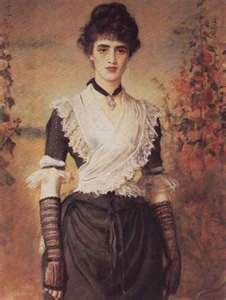As lengths of sleeves became longer so did kidskin gloves. After 1825 and through the Early and mid Victorian period, long gloves fell out of fashion in favor of long-sleeved dresses. Kidskin gloves became shortened and at wrist length. Gloves were to be worn at all times, even when bathing. The textures of the gloves were to be skintight so as to feel natural to the wearer. It was almost a second skin to the Victorians. By the late part of the 19th century opera gloves came back in style, once again being worn at fancy dinners and balls.
A site devoted to all things vintage and antique fashion from the ancient world until the 1990s. Topics include clothing and other accessories which had come to define fashion through the ages. This blog explores the history of fashion along with all kinds of subcultures that incorporates antique and vintage clothing in lifestyle and music.
Friday, July 20, 2012
Kidskin Gloves
Monarchs traditionally have set the standard of fashion in their countries. Elizabeth the first wore kidskin gloves which became widely popular in England throughout Europe. Kidskin gloves since became popular and mostly reserved for formal occasions such as weddings, operas and fancy dinners. Kidskin gloves of all kinds can been seen at balls, dances and other high-class occasions. Portraits have traditionally acted as standards and glimpses into what the most important people wore. These snapshots of the day transferred fashion to the nobility along with monarch rules of court dress. Women’s kidskin gloves known as opera gloves were first sported by Empress Josephine, Napoleon’s sister, in the early 1800s and the fashion of long gloves spread all throughout Europe.
Subscribe to:
Post Comments (Atom)

No comments:
Post a Comment